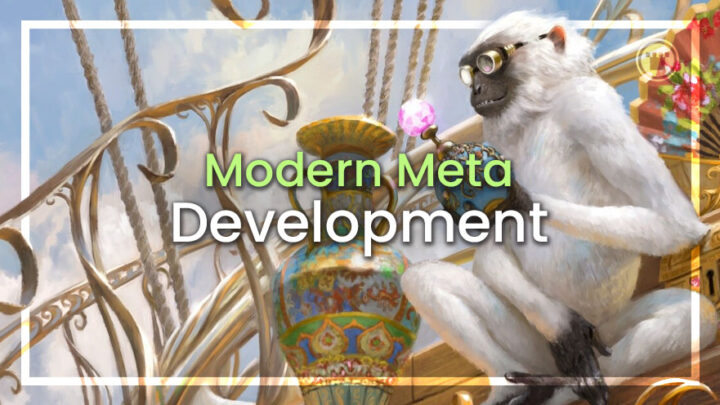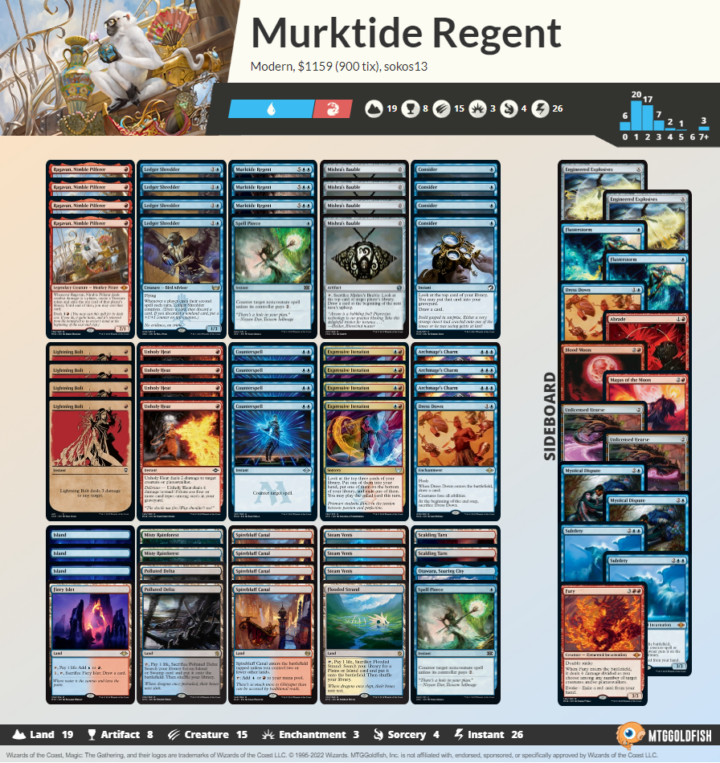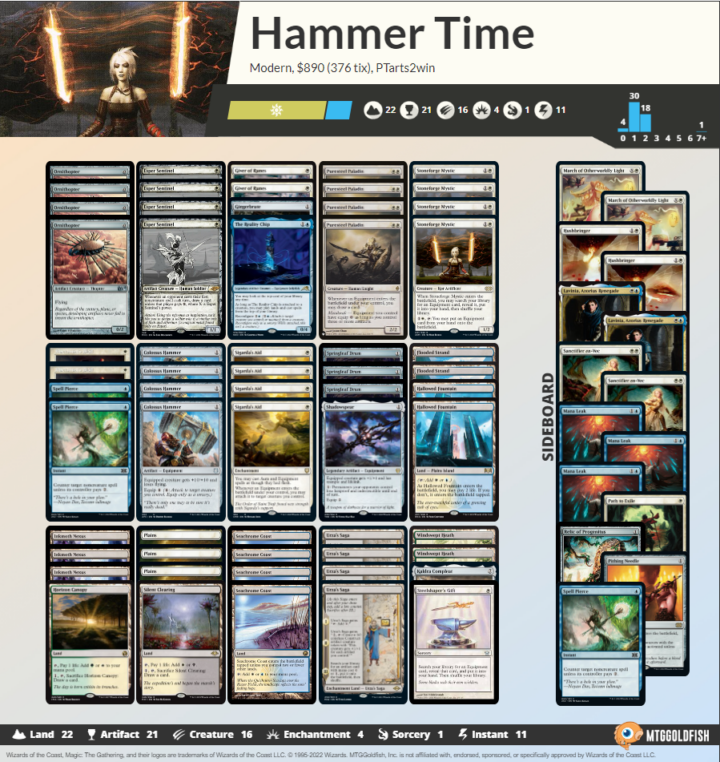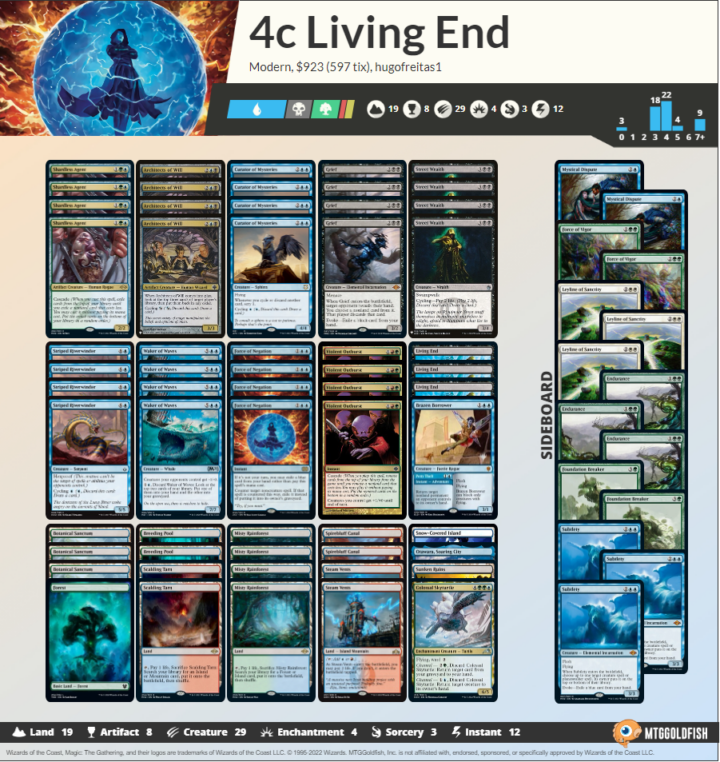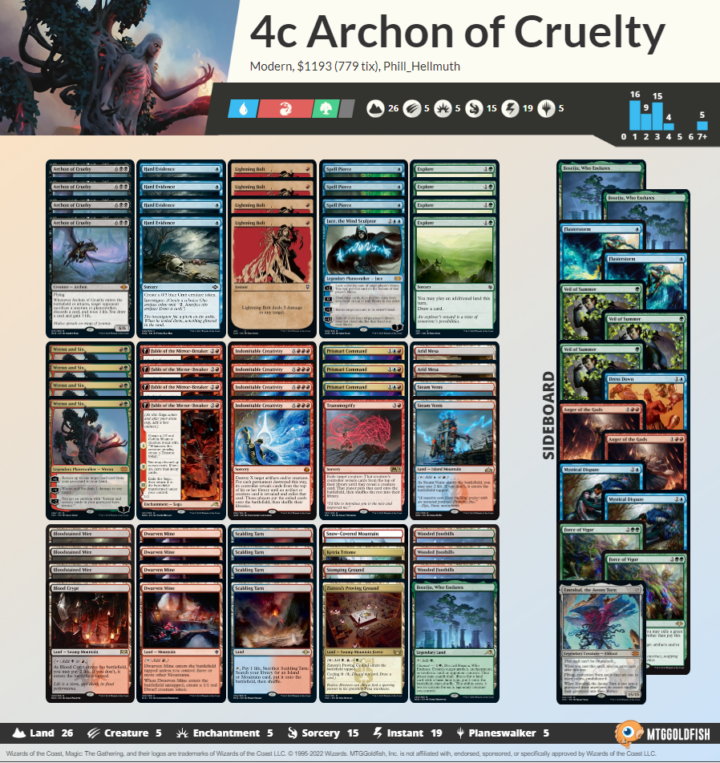Did you play Modern around the release of Modern Horizons 2 but have since taken a break? If so, good news — today we are going over how the meta game and classic modern decks have evolved in the last few months so you’re not surprised when going to your Regional Championship Qualifier.
If you have kept up to date, well, sit back and appreciate the fascinating intricacies of Modern’s meta development.
Dragon’s Rages Channeler is gone from Murktide
While some people are going to scream in the replies that they still play Dragon’s Rage Channeler or know someone who does, they are the exception. As of right now, the incredibly powerful one drop has left the deck. Instead, Ledger Shredder takes up that coveted slot, creating some pretty big implications.
First, opponents are under less pressure from them in the early turns. Ledger shredder can grow quickly, but the difference in a turn one and two play is huge in the world of Modern. You will have far fewer games where you get run over by a flurry of one drops backed up by counter spells.
Second, the Murktide player will flood out much less. Ledger allows you to turn your lands into spells with the Connive mechanic. This is something the Channeler sort of does by Surveilling, but the difference between turning a card in your hand from a land into a spell and setting up for the next turn is huge in reality.
Finally, Murktide itself is better versus Endurance, which is one of the best sideboard cards in Modern right now. Many decks are leaning on their graveyard, and this deck is no different.
Endurance, in the past, would simply eat Channelers in combat by flashing in, shrinking them and blocking. This was often a back breaking game play pattern. As Ledger Shredder has taken a more active role in the decks people are playing, you’re able to avoid getting blown out by Endurance.
Hammer is Infect
Since the loss of Lurrus a few months ago, hammer time has gone through a rebirth in deck building. You can no longer out-grind people with it in the mid game thanks to everyone’s favorite companion.
This caused a split in hammer builds. Some players went for more swords and Nettlecyst at first, plus other grindy cards they couldn’t play before due to Lurrus. This led to the archetype becoming much more of an aggressive, midrange deck.
While some players are still sticking to this style, it has ultimately fallen off since you don’t have anything quite like Lurrus to fully rebuild your board.
Ultimately players have mostly landed on the deck above. It features much more protection for the creatures so you are able to connect early and often with a hammer.
This might not seem like a big change, but in the past, you would just try to rebuild a threat and keep a steady stream coming instead of protecting one attacker.
This change has a few advantages. With Spell Pierce, you’re not only able to protect your threats but disrupt what your opponent is doing, turning matchups like living end from really unfavored to somewhat winnable.
The other benefit is opponents are having to commit their mana first, meaning you can play with more information. After all, having spells countered is often more devastating than discard, since you have to invest the mana, despite both outcomes being relatively similar in the end.
If you’re playing versus hammer, keep in mind you might want to answer the creature while they are tapped out and unable to protect them.
Combo is dead (well, mostly)
Modern in early 2017 was a format dominated by combo. We saw the Humans deck rise to take on this challenge and it instantly became a staple of the metagame due to its great combo match ups. Now, five years later, the Modern Horizons and Modern Horizons 2 have offered fair decks enough tools to interact and keep pure combo decks from succeeding.
One exemption to this rule is Blue Living End. This deck looks to actually use many of the same tools that stop other combo decks from succeeding by applying them to their deck. That gives this combo deck the ability to actually battle through the other permission.
Cards like Grief and Subtly actually working with your main plan is another great benefit, since they can be pitched early and brought back to pressure or outright kill the opponent.
For better or worse, most other combo decks can not be as all in on achieving their plan as Living End decks. Decks like Murktide simply keep those decks from succeeding.
This wouldn’t be such a huge problem if not for the fact that Murktide is also the most popular deck in every Modern tournament. Players love this style of deck and the deck is just quite good.
This has forced combo to look more like the creativity decks. Creativity looks to play a fair game in the early turns, answering what the opponent is doing and working toward getting a few archons in play. This is very different from most combo decks of old in Modern, but things like this are what you have to do in the format to succeed with combo, outside of the aforementioned Living End builds.
End step
Modern is Magic’s most fun and deepest format. There are lots of little changes going on but hopefully these helped you prepare for your next event and not get tripped up by heuristics of old.

Mason Clark is a grinder in every corner of the game who has played at the pro level and on the SCG Tour with Team Nova. Whether he’s competing in Standard, Historic or Modern, Mason plays with one goal in mind: to be a better player than he was the day before. Check out his podcast, Constructed Criticism, and catch his streams on Twitch.

